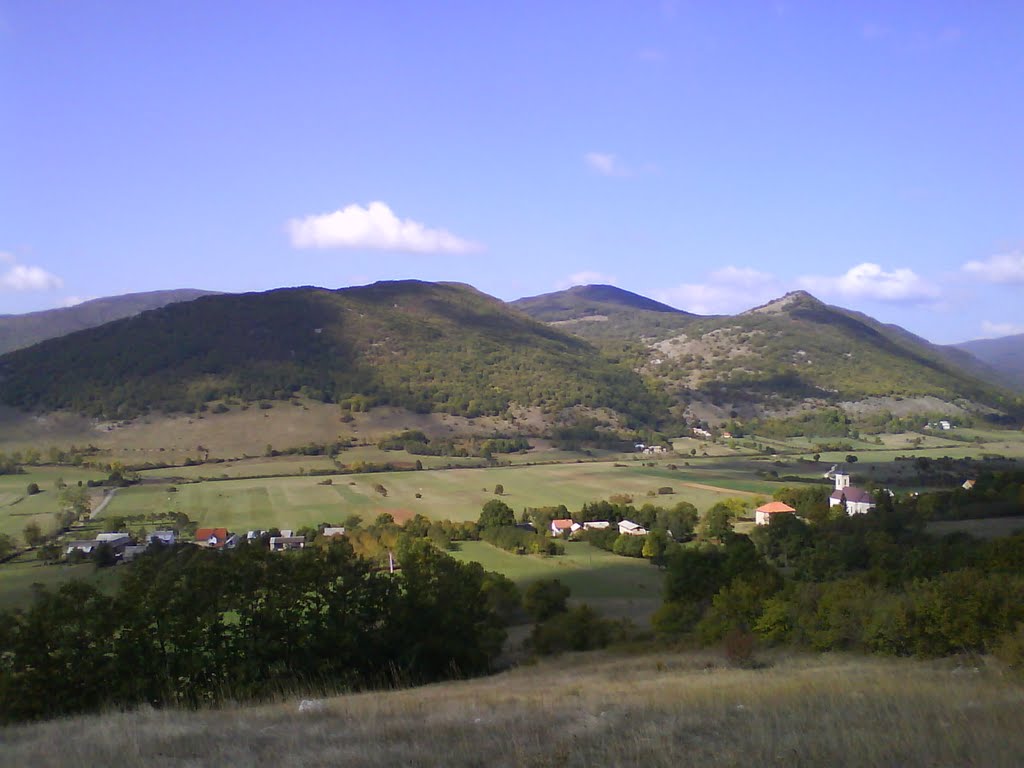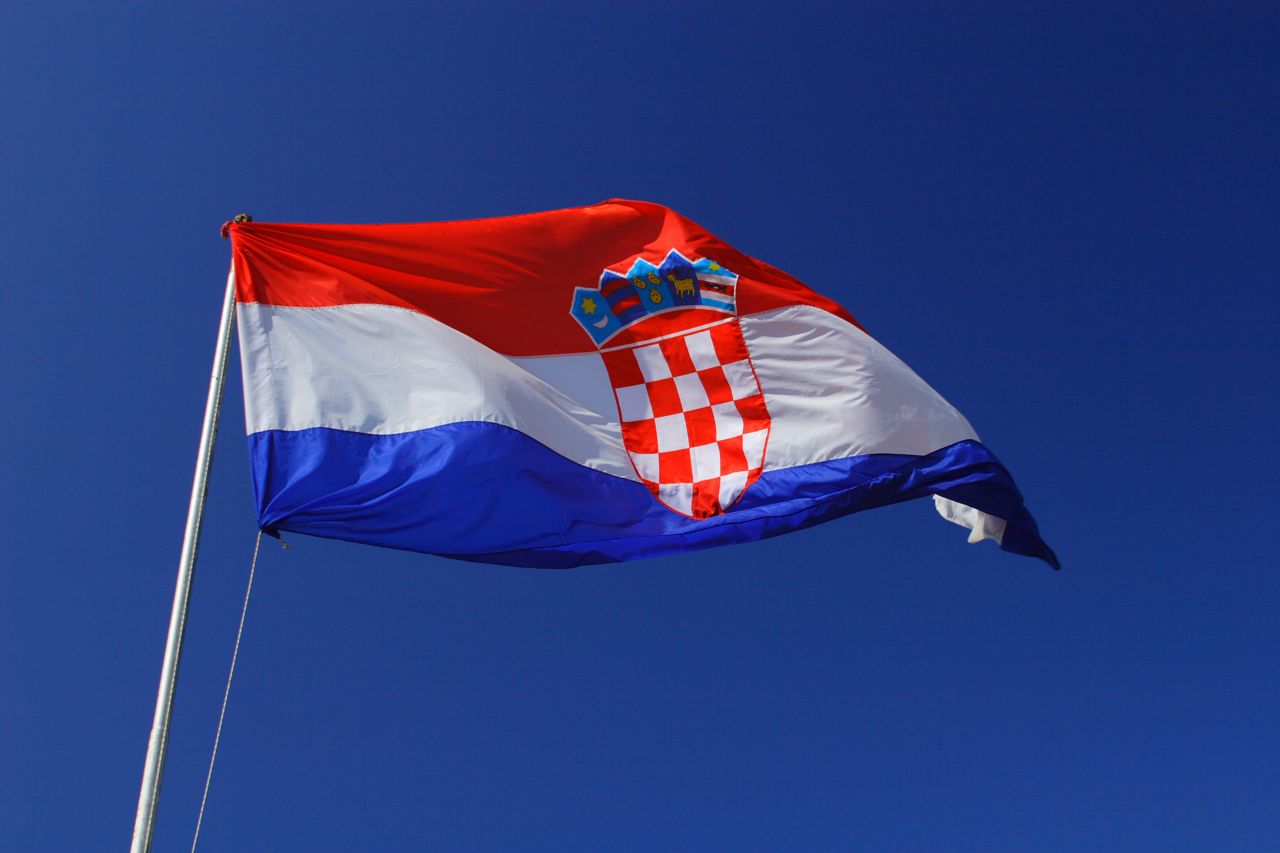Croatia
Croatia
(Croatian Hrvatska), republic in southeastern Europe, in the Balkan Peninsula, bounded on the north by Slovenia and Hungary, on the east and south by Bosnia and Herzegovina and on the east by Serbia. Dubrovnik, a Croatian territory located at the tip of the republic's southernmost coastal stretch, has a short border with Montenegro. The Adriatic Sea forms the republic's long western boundary.
Land and Resources
Croatia's diverse territory includes flat plains, low mountains, a coastline, and offshore islands. The Pannonian Plains in the east are a low-lying, fertile, agricultural region drained by the Drava and Sava rivers. Both rivers flow into the Danube River. The historical area of Slavonia lies in this part of the republic. In the west, Dalmatia is a narrow, barren strip of land within the Dinaric Alps that slopes down to the Adriatic Sea. The Dinaric Alps consist of several parallel ranges of mountains. The coastal range is partially submerged, a phenomenon that accounts for the republic's numerous bays, gulfs, inlets, and more than 1000 offshore islands. The historical area of Istria, a peninsula that stretches out into the Adriatic from Slovenia, lies to the north and west of Dalmatia. A continental climate predominates throughout the republic with hot summers and cold winters. Towns along the coast, however, enjoy a Mediterranean climate with mild, rainy winters and warm, dry summers.

Podlapaca, Croatia
Grandpa Steve talked of his early years in Croatia. He told of taking sheep into the hills around Podlopoc and spending his days watching them while he spun wool on a hand spinner. His right index finger had a groove from the left side of his knuckle to the right side of his fingernail that came from years of spinning.
Grandma Katherine also spoke of tending sheep in the hills. After her father remarried, she spent a great deal of time at her uncle's, helping to tend his sheep.
Population
Ethnically, Croats constituted about 78 percent of Croatia's population according to the 1991 census. Croatian, a language which is closely related to Serbian, is the republic's official language. Croatian is written in the Roman alphabet, while Serbian utilizes the Cyrillic alphabet common among Slavic languages, particularly Russian. A further difference between the two ethnic groups is religion. While most Croats are Roman Catholic, the majority of Serbs belong to the Serbian Orthodox church.
Serbs make up the largest of the republic's other ethnic groups. Other ethnic groups living in Croatia include Muslims, Hungarians, and Slovenes. Slightly more than half of all Croatians live in urban areas, particularly in the republic's largest cities, including Zagreb, the republic's primary industrial center; Split and Rijeka, two important seaports; and Osijek, an industrial center. The remainder live in smaller towns and villages.

History
Croatia formed part of the province of Pannonia during the reign of the Roman Empire. Pannonia was conquered by the Avars, a Mongolian people, in the 6th century AD. During the 7th century, the Croats conquered the Avars; subsequently the Croats were conquered by the Franks. Later the region was made into the duchy of Croatia and Slavonia. In 925 Croatia became an independent kingdom, which lasted until the end of the 11th century, when a period of political anarchy led to intervention by Hungary. Except for periods of occupation by the Turks and French, Croatia was an autonomous kingdom under Hungarian rule from 1102 until the Hungarian revolution of 1848 to 1849. Croatia and Slavonia were then made a separate Austrian crown land. In 1867 the Austrians and Hungarians created the dual monarchy of Austria-Hungary, and Croatia was assigned to Hungary. Later, 14 years after receiving autonomy, Croatia and Slavonia united. Hungarian manipulation of Croatia, however, ultimately led to mutual hostility which was carried forth into World War I (1914-1918). During World War I, Croats and Serbs mostly fought together, hoping to create a kingdom that would unite all the southern Slavic peoples. On December 1, 1918, following the overthrow of the monarchy of Austria-Hungary at the close of the war, Croatia became part of the independent kingdom of the Serbs, Croats, and Slovenes under the Serbian monarchy of King Alexander. When conflict between Croats and Serbs led to greater national tensions, Alexander tightened control over the country, and in 1929 he renamed the kingdom Yugoslavia (Land of the South Slavs). Tensions between the two ethnic groups continued, however, and the postwar history of the state was marked by a struggle by the Croats for greater political autonomy. Croatian extremists assassinated Alexander in 1934, and a Fascist movement began to garner support among the Croats. In 1939 the approximate present boundaries of the republic were defined and the area was named Croatia.
So, at the time of their emigration, Steve and Katherine were citizens of Croatia, a possession of Hungary. In order to gain citizenship, they had to renounce their allegiance to whatever sovereign in power at the time they filed their Petition for Naturalization, most likely Petar II, King of Yugoslavia.
Information on Croatia, immigration and the history of the railroad when Steve was working on it, was taken from "Encarta 95". For further reading you may check out "Croatia," "Immigration" and "Railroad Labor Organizations," Microsoft (R) Encarta. Copyright® 1994 Microsoft Corporation. Copyright® 1994 Funk & Wagnall's Corporation.
